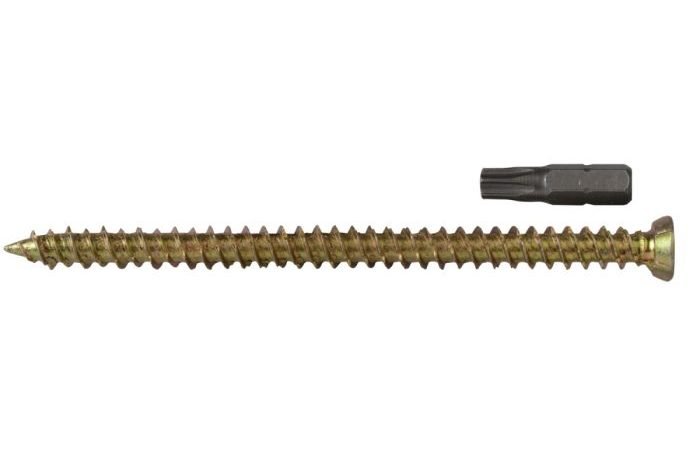How To Install Timber Screws And Masonry Screws?

Structural timber screws have a wide range of uses and are commonly used for both internal and external applications. XR Black structural screws, for example, are black and C4 rated and can be used for decking and fencing. In addition, they are ideal for use in raised flower beds.
The hinge screws and fixed washer help to distribute the load beneath the screw head to ensure a smooth fit. These products are suitable for most home construction projects and can be purchased online. Structural timber screws are made of high-strength wood.
Some Interesting Facts About Timber Screw Fasteners And Their Uses
They are used to attach load-bearing timber structures and for connections between different types of wood. They are also designed to provide tensile reinforcement perpendicular to the grain. The best option for replacing the damaged screws is to drill a hole in the center of the door. A sharp-angled drill bit is best for drilling the new hinge screws, which should hit the wood or drywall.
Choose the right type of nut and use a screwdriver to fit them. If the existing screw is too old and has corroded, you can drill a new screw using a screwdriver. To drill a new screw, use a sharply angled drill bit. Ensure that the new hinge screw hits the drywall or wood correctly. If the old hinge screws has been rusted, you may have to use a drill bit that is a little too large.
Self-Drilling Screws – Still A Major Fastening System
If you are not certain of what type of nut to use, it is best to consult woodworking professional. When installing a new screw, you should consider the thickness of the door and the direction of the grain. You should also make sure that the screws are the right length for the job.
If you plan to drill a hole at the top or bottom of the door, make sure you drill a hole in the center, so it will not warp. Then, you should select a sharply angled drill bit. The angle of the drill bit should hit the wood or drywall, and you should choose the correct type of nut.
The Fasteners And Elements You Will Need For A Privacy Fence
Depending on the thickness of the timber, you should choose masonry screws that are self-tapping. They will not need a pilot hole and require a smaller diameter than the screw. These screws are designed to be used in thicker wood and metal, but you should also use them carefully when they are self-tapping.
These can be used to fix wood, masonry, or composite materials. In this case, you should make sure that the threads are evenly spaced. Self tapping masonry screws can be used on thin metal. They do not require a pilot hole and do not need to be threaded. For thick wood, you should use larger diameter self-tapping masonry screws.
Screws – The Simplest And Most Used Fastener
A drill hole is a must for these types of structural timber screws. This hole will accommodate the screws in the middle of the timber, but it will be more difficult to make a pilot hole. Self-tapping masonry screws are available in different sizes and are used to fasten thin metal. Usually, the screws have a small pilot hole to prevent them from screwing into thicker wood.
A self-tapping masonry screw requires a small hole for a pilot. It is important to use a masonry screw that is self-tapping. In addition to the self tapping masonry screws, there are also self-tapping wood and composite decking screws.
Tips In Finding A Good Screw Distributor Online
As a structural fastener, Timber screws are available in a range of lengths and are suitable for a variety of interior and exterior applications. They are designed to pull structural members together. It is also ideal for use with ACQ-treated lumber. They are also available in a metric size.
Lastly, this type of fastener is suitable for use in both interior and exterior applications. There are two types of lags: the bearing-type connectors and the masonry-type connections. For structural timber screws, you can choose from flat-head or hex-head types. The former is generally used for internal and external applications.
The latter is suitable for a wide range of internal and external applications. These types of lag screws are a popular choice for exterior and interior construction. The hex-head drive provides excellent driving power and is suitable for ACQ-treated lumber. The hex-head type of the screw also reduces the chance of pre-drilling.
How To Choose Composite Deck Screws
If you want to build a deck, composite deck screws are an essential part of the process. These fasteners are UV-protected and UV-resistant, which makes them the perfect choice for the outdoors. You can also find custom colored screws at OSC.
While these fasteners are not ideal for every surface, they are a great option for decking. You can choose from a wide range of different colours and finishes, including black, brown, and red.
Unlike traditional wood screws, composite deck screws are self-drilling. Instead of drilling a pilot hole, the screw’s self-tapping tip cuts the thread at the tip. When using them in concrete, however, it is always better to drill a pilot hole first to make sure the screw is secure. If you’re going to be working with composite materials, you should use screwdrivers designed for this application.
Use The Precise Composite Deck Fasteners For Your Projects
When it comes to choosing composite deck screws, you should choose those designed specifically for these materials. These fasteners are available in a wide variety of sizes, and their small head diameter allows them to be positioned more easily. You can choose between M4.8 x 50mm and M4.8 x 60mm – both of which are suitable for use on composite materials.
These screws are also weatherproof, which makes them the perfect choice for exterior decks. Composite deck screws should be used on firm surfaces, such as concrete or masonry. You don’t need a pilot hole for them, so you can use them anywhere you want. When using them on plastic materials, though, you should use specially made screws.
The Paybacks Of Composite Deck Fasteners
These types of screws have a much stronger thread and are stronger than regular self-tapping ones. To ensure the best results, be sure to use a screwdriver with the correct length, which will depend on the size of the pilot hole.
There are two kinds of composite deck screws. These are self-tapping screws, which are ideal for concrete and masonry but require a pilot hole. These screws do not need to be threaded but should be used with a pilot hole, which will protect the substrate. Regardless of what material you’re using, it’s important to choose the right type of composite deck screws.
There are many different types of plastic-deck screws, but they should all be used with care. There are a variety of screws available on the market. The best composite deck screws are made from composite-specific materials and have a higher quality finish than wood-based ones.
Summary
For the best results, choose a screw that is suitable for the specific material. If you want a screw that is corrosion-resistant, you should choose one that is designed for composite decking. The material’s color should be matched with the threaded screws to avoid any discoloration or damage.





